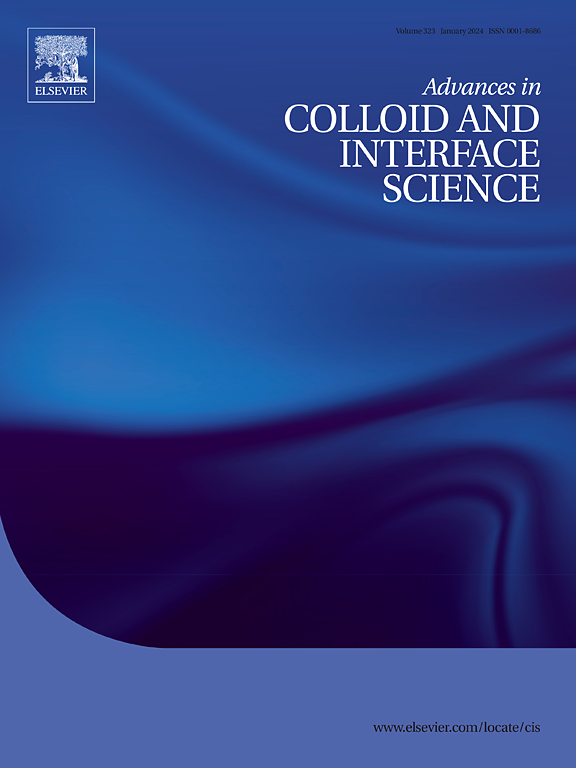Strategies to modulate underwater oil wettability and adhesion
IF 15.9
1区 化学
Q1 CHEMISTRY, PHYSICAL
引用次数: 0
Abstract
Inspired by the extreme underwater oil repellence found in fish scales, formally defined as underwater superoleophobicity, various functional interfaces have recently been derived. Such heterogeneous oil wettability underwater is attributed to the entrapment of liquid water in an extremely hydrophilic interface decorated with micro- and nanostructures. Designing underwater superoleophobic surfaces with differences in the force of oil adhesion is important for extending its potential utilizations in various and relevant applications. While underwater non-adhesive superoleophobicity enables applications like oil-liquid separation, self-cleaning, anti-fouling, anti-platelet adhesion, etc., the underwater superoleophobic interfaces embedded with the controlled force of oil adhesion remain crucial for another set of applications—including no-loss oil droplet manipulation, transfer, chemical toxin sensing, etc. This review discusses various strategies for deriving such underwater superoleophobic surfaces, emphasizing the need for co-optimizing appropriate surface nanoarchitectonics and hydrophilic chemistry and illustrating strategies for addressing durability and scalability challenges. Further, this review reveals the dominant role of chemical modulations over topography optimization for precise and orthogonal control on both oil wettability and force of oil adhesion. Additionally, strategic post-functionalization approaches are highlighted that enable instrument-free and naked-eye detection of physiological biomarkers and environmental toxins. It also depicts approaches to deriving mechanically durable underwater superoleophobic coatings—improving their suitability for more realistic application in outdoor conditions.

调节水下油润湿性和附着力的策略
受鱼鳞中发现的极端水下拒油性(正式定义为水下超疏油性)的启发,最近衍生出了各种功能界面。这种油在水下的非均质润湿性是由于液态水被包裹在一个由微纳米结构装饰的极其亲水的界面中。设计具有不同油附着力的水下超疏油表面对于扩大其在各种相关应用中的潜在应用具有重要意义。虽然水下非黏附的超疏油特性可以实现油液分离、自清洁、防污、抗血小板粘附等应用,但嵌入油粘附控制力的水下超疏油界面对于另一组应用仍然至关重要,包括无损失油滴操纵、转移、化学毒素传感等。本文讨论了获得这种水下超疏油表面的各种策略,强调需要共同优化适当的表面纳米结构和亲水化学,并说明了解决耐久性和可扩展性挑战的策略。此外,本综述揭示了化学调节在精确和正交控制油润湿性和油粘附力方面对地形优化的主导作用。此外,战略性的后功能化方法被强调,使无仪器和裸眼检测生理生物标志物和环境毒素。它还描述了获得机械耐用的水下超级疏油涂层的方法,提高了它们在室外条件下更实际应用的适用性。
本文章由计算机程序翻译,如有差异,请以英文原文为准。
求助全文
约1分钟内获得全文
求助全文
来源期刊
CiteScore
28.50
自引率
2.60%
发文量
175
审稿时长
31 days
期刊介绍:
"Advances in Colloid and Interface Science" is an international journal that focuses on experimental and theoretical developments in interfacial and colloidal phenomena. The journal covers a wide range of disciplines including biology, chemistry, physics, and technology.
The journal accepts review articles on any topic within the scope of colloid and interface science. These articles should provide an in-depth analysis of the subject matter, offering a critical review of the current state of the field. The author's informed opinion on the topic should also be included. The manuscript should compare and contrast ideas found in the reviewed literature and address the limitations of these ideas.
Typically, the articles published in this journal are written by recognized experts in the field.

 求助内容:
求助内容: 应助结果提醒方式:
应助结果提醒方式:


